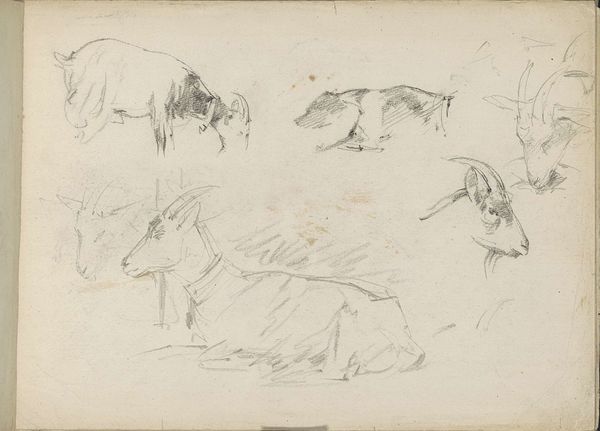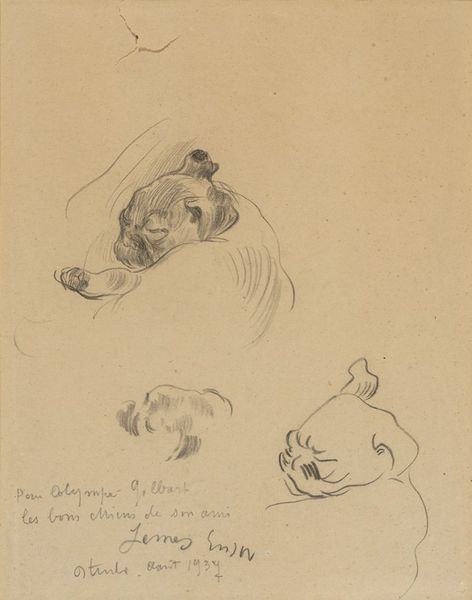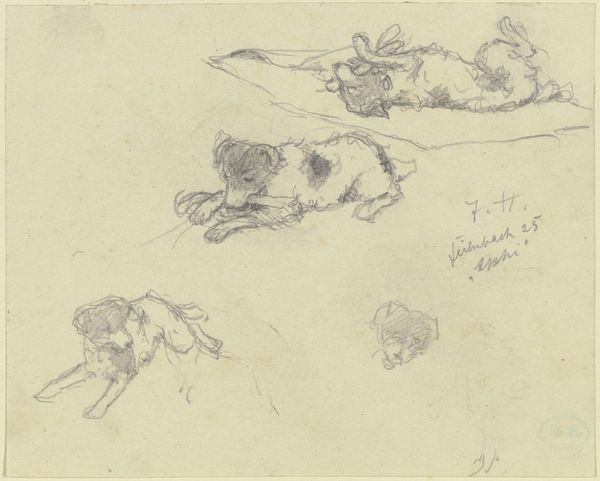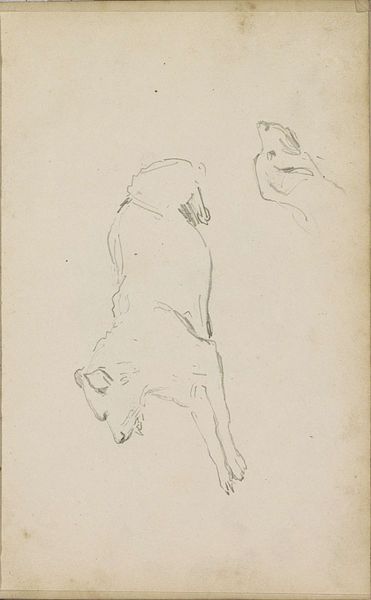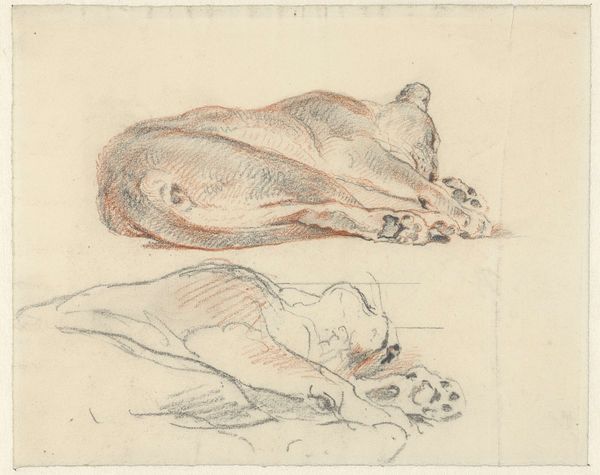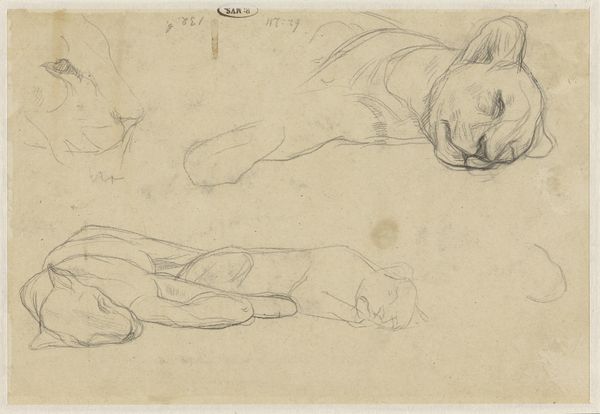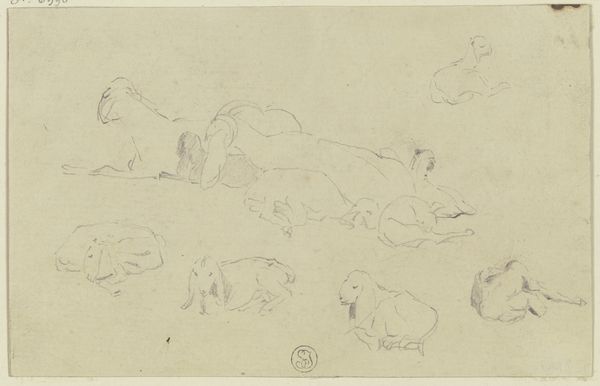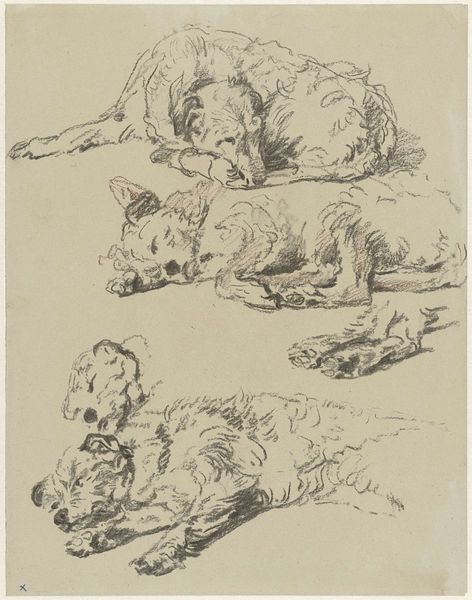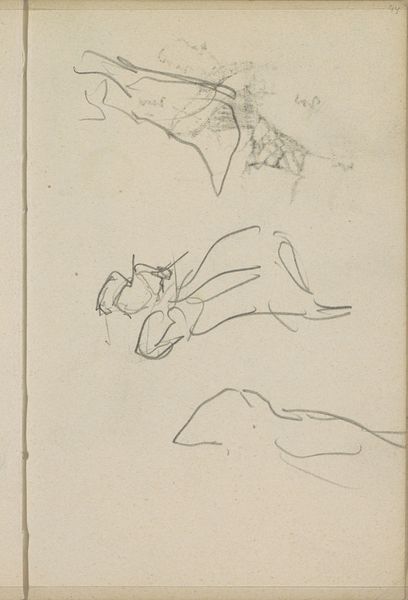
drawing
#
portrait
#
drawing
#
animal
#
realism
Dimensions: 351 mm (height) x 295 mm (width) (bladmaal)
Curator: Welcome. We’re standing before Lorenz Frølich’s “Studies of Dogs,” a drawing from 1836 housed here at the SMK. The composition features multiple sketches of dogs in various poses, each rendered in delicate pencil lines. Editor: It has a quiet intimacy, doesn’t it? The dogs seem relaxed, unguarded. There’s a gentleness to the artist’s touch. They look like studies but somehow possess a mood more potent than a purely observational work. Curator: Indeed. As an academic exercise it offered Frølich, like many of his peers, the perfect opportunity to observe animal anatomy and character, something increasingly popular within bourgeois artistic circles in the early 19th century. It speaks to a changing relationship with animals at the time. Editor: Exactly, and thinking of that relationship, I can't help but see it beyond simple representation. Looking at that curled-up dog on the right… it evokes domestic comfort, a subtle comment, perhaps, on shifting societal values that placed newfound emphasis on sentiments like tenderness and private, familiar life. Curator: You raise an important point. The piece invites consideration of societal trends and of humans’ engagement with the natural world and how artistic production serves to reify this vision of nature, particularly of these ‘domesticated’ creatures. It begs questions of how ‘nature’ itself comes to be conceived in a context increasingly shaped by human interests. Editor: It also prompts reflection on the politics of representation and on the selective portrayal of subjects and on who is considered worthy of being depicted in art. And, it reveals how this selection further reinforces class structures, shaping broader social perceptions. Curator: And consider how the medium itself contributes to these ideas. Drawing allows for an immediacy and vulnerability in depicting subjects absent in the grandeur of, say, history paintings, offering the viewer an unmediated image, so it would seem. But, nonetheless, filtered. Editor: I see “Studies of Dogs” not as mere animal portraiture but as a telling glimpse into the dynamics of Danish society during the Biedermeier era—an aesthetic rooted in intimate domesticity and emerging bourgeois norms. Curator: And the artist certainly played into these tastes, gaining prominence by mirroring values back at a rapidly consolidating Danish cultural identity in this very specific moment in time. Editor: A deceivingly modest artwork, laden with history. Curator: Precisely. An artwork whose relevance endures through new readings and analyses.
Comments
No comments
Be the first to comment and join the conversation on the ultimate creative platform.
